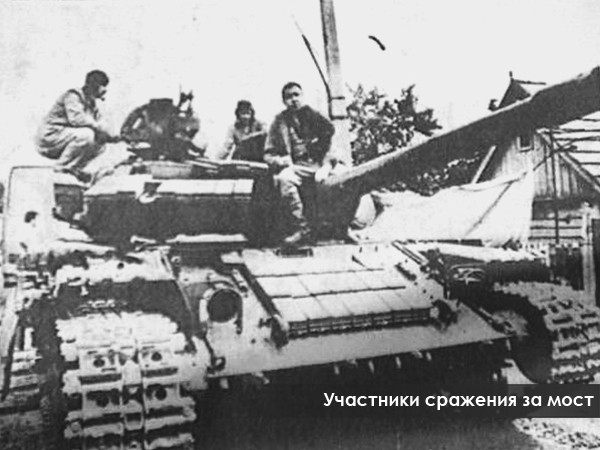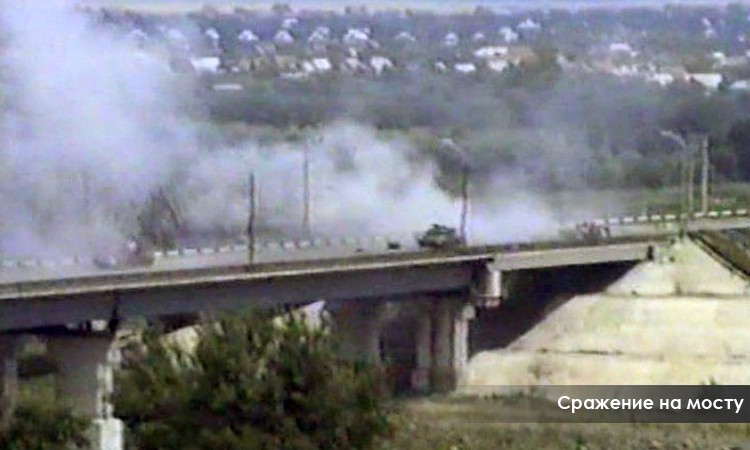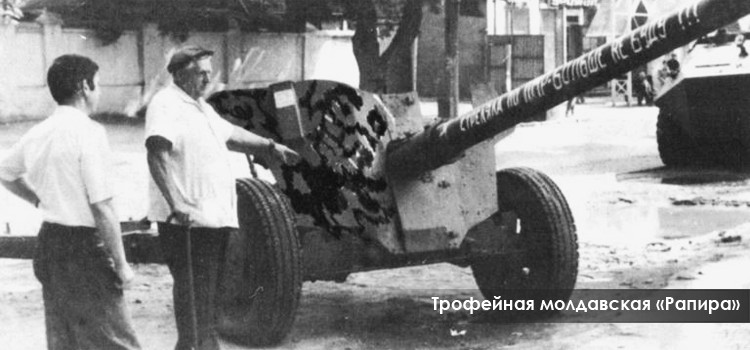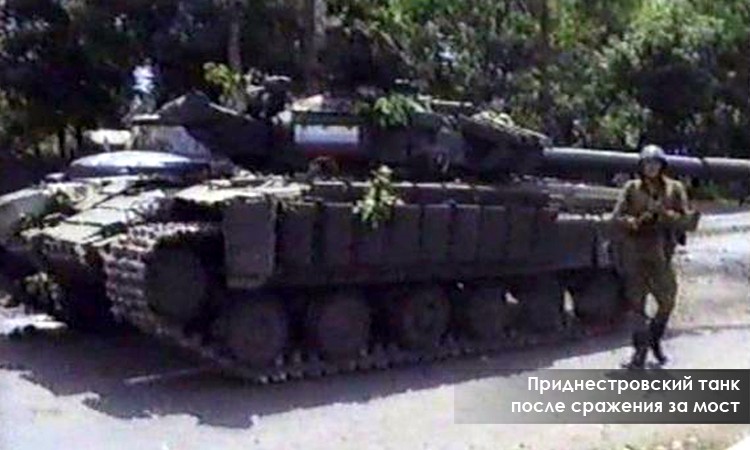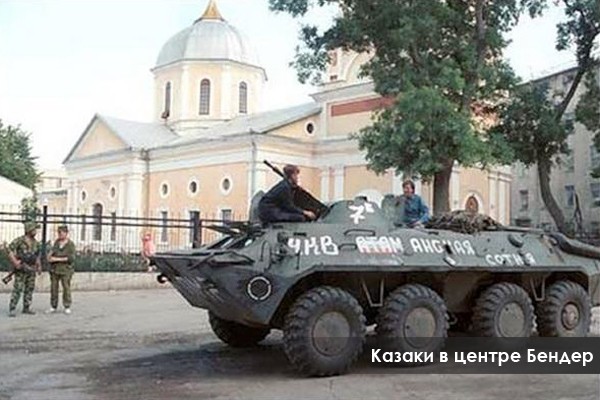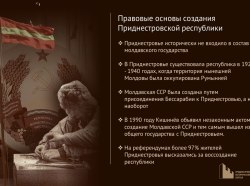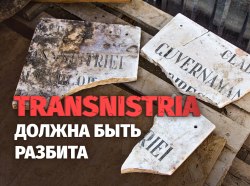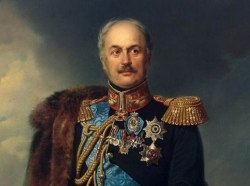One of the most bloodshed fights during the battle for Bendery occurred near the bridge across the Dniester. The bridge was the only transport link between the city and the Pridnestrovian Republic. Therefore, it was impossible for Moldova’s police and armed forces to capture the city without this strategic crossing.
In his memoirs the former defence minister of Moldova, I. Costaș, wrote that it was planned to seize Bendery by efforts of several tactic groups. The first, under command of OPON Colonel A. Gamurari, was to enter the city from the south, fight its way to the police department and take the city centre under control. The second, headed by Army Colonel L. Karasev, was tasked to enter the city along the Kishinev motorway, take the bridge under control and cut off Bendery from the left bank.
In the evening of 19 June, Colonel Karasev’s group advanced to Bendery from a military base in Bulboaca. By midnight he had approached the bridge with a motorised infantry, two anti-tank guns Rapira and 21 armoured vehicles. The motorcar intersection on the entrance to the city from the bridge was turned into a stronghold. A sector of the road from the intersection to the traffic police post was shot through from three sides. A nine-storey building nearby was a perfect place to correct artillery fire. The bridge itself was blocked with concrete constructions. Ex-Soviet Army officer L. Karasev knew his subject.
By that time the city’s executive committee, workers' committee and guards' quarters had been under continuous, severe attacks. Several groups of the city’s defenders hid at Russia’s military installations — the chemical defence battalion and the Bendery Fortress. As Colonel Karasev later recalled, it was these groups which attacked the Moldovan units from the rear.
The Russian army was ordered to maintain neutrality, but the events of 19 June could not but concern both its officers and soldiers. They saw the Moldovan troops and military hardware capturing the city. They heard the sounds of a battle but were bound by the non-interference order. Nevertheless, when several Moldovan shells accidently hit the depots in the fortress, the officers spoke against the neutrality.
Meanwhile, during the night of 20 June the Pridnestrovian leadership announced the preparation for a breakthrough to Bendery. At 1:30 a signal for the assembly of the People’s Militia was broadcast on the radio in Pridnestrovie.
Sergey V., a tank unit commander, Tiraspol (from the book by G. Volovoy): We, tankmen, had a special assembly signal (Black locust), which was to be broadcast in the event of an alarm. I remember it was not broadcast for a long time. Finally, I phoned the radio station and asked to transmit it. When tankmen gathered, we went to the 14th Army quarters in Tiraspol to ask for tanks. Three tanks left the quarters, but women stood in their way. Laughing, with their hands up, Russian officers got out of the tanks. The women surrounded the tanks, and one of them got up to the tank’s armour. Our tankmen formed the crews, got into tanks and drove them to Parkany village.”
In Parkany the Pridnestrovian forces were concentrating for a breakthrough to Bendery. In the morning three T-64 tanks, borrowed from the Russian army, and several armoured vehicles deployed at a viaduct arch. By midday five more tanks had joined them.
Sergey V., a tank unit commander, Tiraspol: «The tanks were designed for both training and battle. They were not equipped with machineguns, which were supplied later together with ammunition belts. The weapons were in thick grease. It was difficult to fix a machinegun in a bracket as it was partly broken. We didn’t even have enough time to learn the tank’s design as some design features were unknown to us. At last, at about 7 — 8am a command was given to move forward to the bridge. Three tanks began an attack. There was a small group of five men on the tank’s armour. During the attack I found that the tank’s charging mechanism did not function. The machinegun’s electric trigger did not function either, and we had to shoot it manually. However, after a few bursts the machinegun got locked, and we had to retreat. In fact, the failure of the first attack was not only caused by technical problems, but rather by the lack of infantry.”
In the next attack two tanks supported by the infantry managed to fight their way across the bridge and beside Moldova’s defence line and found themselves near the traffic police post. Meanwhile, the infantry got stuck in exchange of fire and could not cross the bridge. Without infantry’s support the tanks were not able to fight in the city. The Moldovan forces started to shoot at them from grenade launchers and anti-tank guns Rapira. The tanks had to move back. A shell hit and immobilised one tank. Its crew, headed by Senior Sergeant N. Grishin, turned the tank’s turret and fought for another an hour and a half. The tank was being continuously shelled. Finally, shells' cumulative stuffing eroded the armour. Only tank driver A. Antonets survived in this fighting as he found himself locked in his compartment after the turret had got jammed. Only in the dusk, when the battle had subsided, did he manage to get out from the tank.
A new attack followed the second failure. This time three tanks alongside a group of Cossacks and TSO soldiers attempted to break through across the bridge but met heavy mortar artillery and machinegun fire. As the commander of the bridge defence, Colonel L. Karasev, recalled later, on seeing advancing tanks many Moldovan soldiers left their positions, which is why battalion officers, personally led by their commander, began to shoot Rapira guns and fight back the Pridnestrovian tanks.
One tank was knocked out and put out of action. It moved to Parkany, but suddenly near the viaduct arch its ammunition detonated, and the tank exploded. A cumulative shell hit another tank and jammed its manholes — the tank was burnt out. A third tank, manoeuvring, left the range of gun fire, but was knocked out from a grenade launcher. The Pridnestrovian soldiers attacking the bridge had to retreat.
All along Bendery’s defenders who hid in the fortress and Russia’s chemical defence battalion were supporting the attackers from behind. They attacked the Moldovan units from the rear and managed to stop troop reinforcements going to the bridge, thus weakening its defence.
The third failure resulted in the change of commanders of the Pridnestrovian forces. Lieutenant Colonel Shirokov, head of TSO units, took command over Bendery’s deblocking operation. All available forces had been drawn to the bridge from Tiraspol. The Cossacks and people’s militia were joined by guardsmen, militia and the Delta tactical assault group.
At about 19:00, 20 June, three tanks and three armoured vehicles with infantry launched a new assault. The road narrowed on the bridge, the ramp was blocked with concrete structures, and the attackers could not form a battle array. Moldova’s Colonel L. Karasev took advantage of the situation. When the head tank was exiting the bridge, a shell hit it and set the tank on fire. The whole column stopped. Heavy fire was opened on the infantry sitting on the armored vehicles, and they began to retreat slowly, shooting back.
Suddenly a BTR that was going in the middle of the column turned to the right and very tightly drove forward past the tanks. The vehicle pulled ahead and dashed for the defenders' positions. The column followed it. The attack was still under way.
However, at the traffic police post the heroic BTR was mined and stood dead. A tank passed it, crushing the enemy’s vehicles on its way, and slipped through to the nearest nine-storey building. Here, the T-64 was stopped by a grenade, which damaged the tank’s track. Despite that, the tank continued fighting. Another BTR headed to the traffic police post, but its engine suddenly went dead, and it also stopped. The Cossack infantry jumped off from its armour and started a reckless attack on the Moldovan positions.
The Cossacks' assault was backed by a third tank, which also went dead and could not go as far as the bridge ramp. The last armoured vehicle made a charge at the enemy’s positions but was put out of action with a shell.
Meanwhile, along the railway the Delta squad came to the battle place. They were followed by volunteers and militia. Together with the Cossacks they hid behind a fortress embankment to the right from the bridge and continued shooting at the Moldovan forces.
D. Zelinskiy, militia senior sergeant: «We hid behind a slope of a small transport bridge. Suddenly an armoured vehicle emerged from the nearest square and drove towards the bridge. We thought we were done. It would easily shoot us one by one. In some despair, crying «Hurrah!', we dashed forward, but the BTR slowly turned around and drove away without shooting.”
The retreat of the Moldovan hardware began soon after two more tanks accompanied by a BTR came from Parkany. One of them was put out of action with a self-propelled shell, another T-64 sustained several hits and managed to burst into the defenders' positions. It put Moldovan soldiers to flight, following which the tank and the BTR went to Bendery’s executive committee.
Valeriy P., militia sergeant: «Meanwhile, from Varnitsa village came at a high speed a Moldovan light artillery tractor. Our grenade launcher operator managed to hit it. After that it began to turn around. Then the Moldovan wounded jumped out from a trench and ran up to it. They were knocking on the armour with their fists, crying to the crew to take them away. The commander appeared in a manhole and shouted at them in Romanian. Then he closed the manhole and the tractor rushed back. The wounded tried to get up to its armour, ran after it as far as they could.”
F. Dobrov, chairman of Bendry’s workers' committee (from the book by G. Volovoy): «When a tank and a BTR fought their way to us and 30−40 Cossacks began to jump off them, our men ran out from the buildings, shouting «Hurrah!'. The newcomers did not understand the situation and opened heavy fire on them. Then several Grigoriopol Cossacks, who were in our positions, scrawled to the city’s executive committee and explained the situation, following which the fire ceased. It turned out that those who broke through from Tiraspol had not been informed about the disposition. Finally, tanks and reinforcements did their part, dispersing and frightening away Moldova’s detachments. Leaving their vehicles, they ran away in panic to the suburbs.”
Photographs by Valeriy Kruglikov


